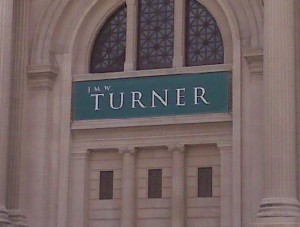There is an interesting piece by Mike Spector in today’s Wall Street Journal entitled “A Portrait of Art As a Tax Deduction” which explains that with the tightened restrictions on tax deductions for fractional gifts of art to museums donors are simply not giving their artwork as they have in the past.
Donors often hesistate to sell their artwork because the proceeds are subject to 28% federal capital gains tax. Instead, many art collectors choose to donate their artwork to museums where it can be shared with a larger audience, and the donor gets a tax benefit of the market value of the artwork at the time of the donation. Some donors do not wish to part with their artwork all at once, however, so they utilize fractional interest donations.
It used to be that a museum donor could donate a fractional interest in a work of art (say, one third of a painting) and take a tax deduction for the dollar value of one third of that painting. The painting would be kept with the owner for part of the year and then would be displayed at the museum for a portion of the year as well. (Incidentally, such museum exhibition itself often increases the value of a work of art.) These donors could later donate further fractional interests to the museum (at increased market value) and take further tax deductions on the second donation, or even a third or fourth, etc. The value of the work of art (and thus the value of the fractional donation or tax deduction) was assessed at the time of each subsequent donation. This created a system whereby donors often donated works of art to museums in fractional interests over time (for various tax deductions over the years) rather than all at once.
The new system works quite differently due to a 2006 pension reform law. The value of the work of art is frozen at the time of the first deduction, so that donors can only deduct a fraction of what the value was at the time of their first fractional interest donation, regardless of what the value of the artwork becomes over time. However, if the value of the artwork declines, the donor’s later tax deductions are based upon the reduced value for the art. Finally, the total gift of the artwork must be completed within 10 years or before the donor’s death or the IRS will charge the donor or his/her estate a portion of the deduction plus interest and penalties.
A new plan is under discussion now, called the Schumer-Grassley plan, which could ease some restrictions yet add others. Stay tuned.
 Now on view at the Guggenheim is a retrospective of Louise Bourgeois’ work. The exhibition, co-organized by the Guggenheim and the Tate modern, London, takes a chronological look at the 96-year-old artist’s oeuvre beginning with her early paintings combining female and home imagery which later become integral to her later work at the upper spiral of the museum.
Now on view at the Guggenheim is a retrospective of Louise Bourgeois’ work. The exhibition, co-organized by the Guggenheim and the Tate modern, London, takes a chronological look at the 96-year-old artist’s oeuvre beginning with her early paintings combining female and home imagery which later become integral to her later work at the upper spiral of the museum. 
